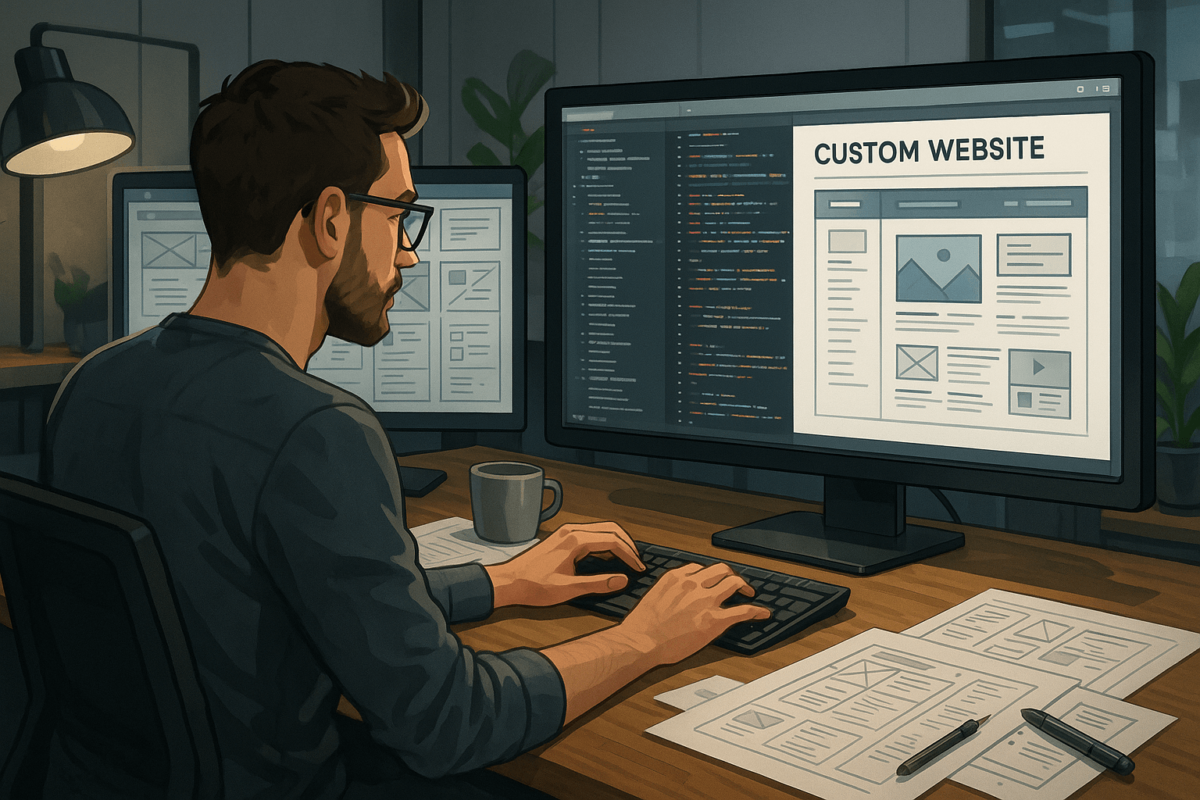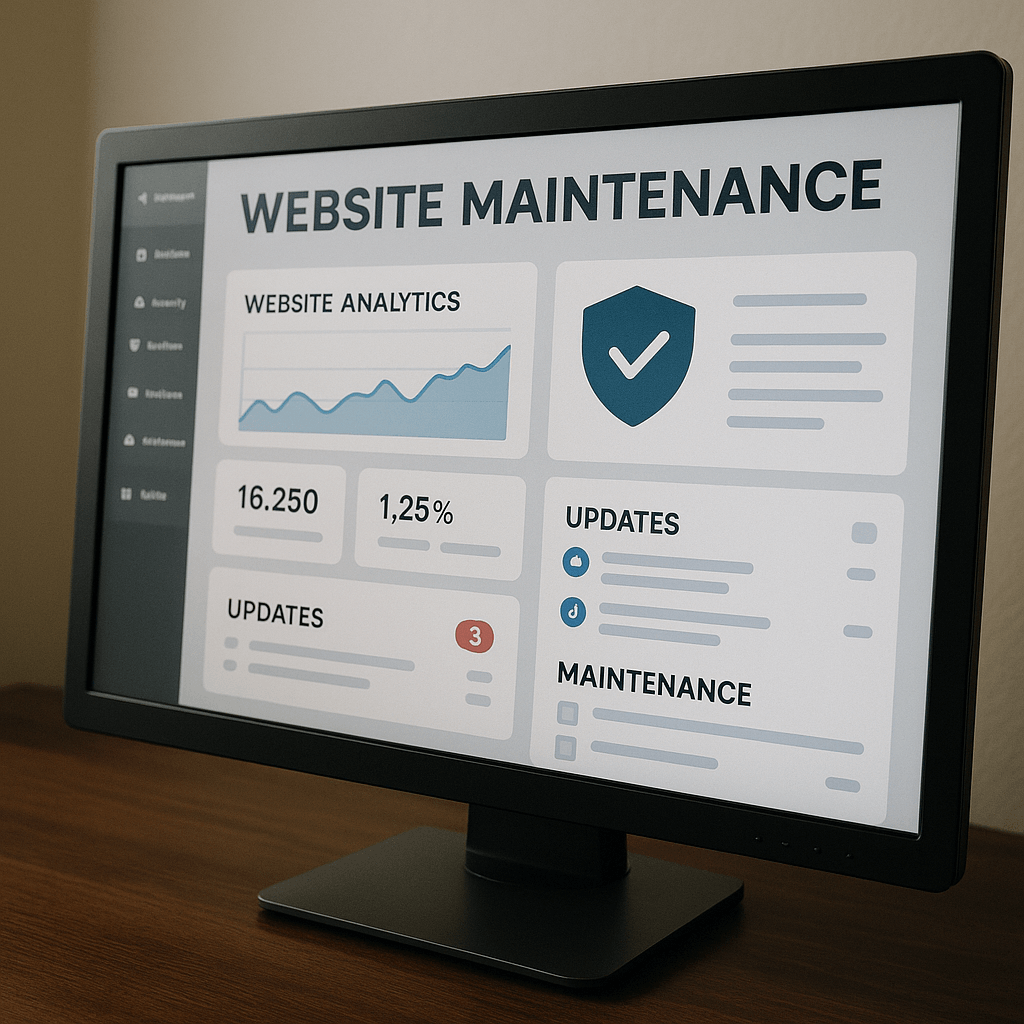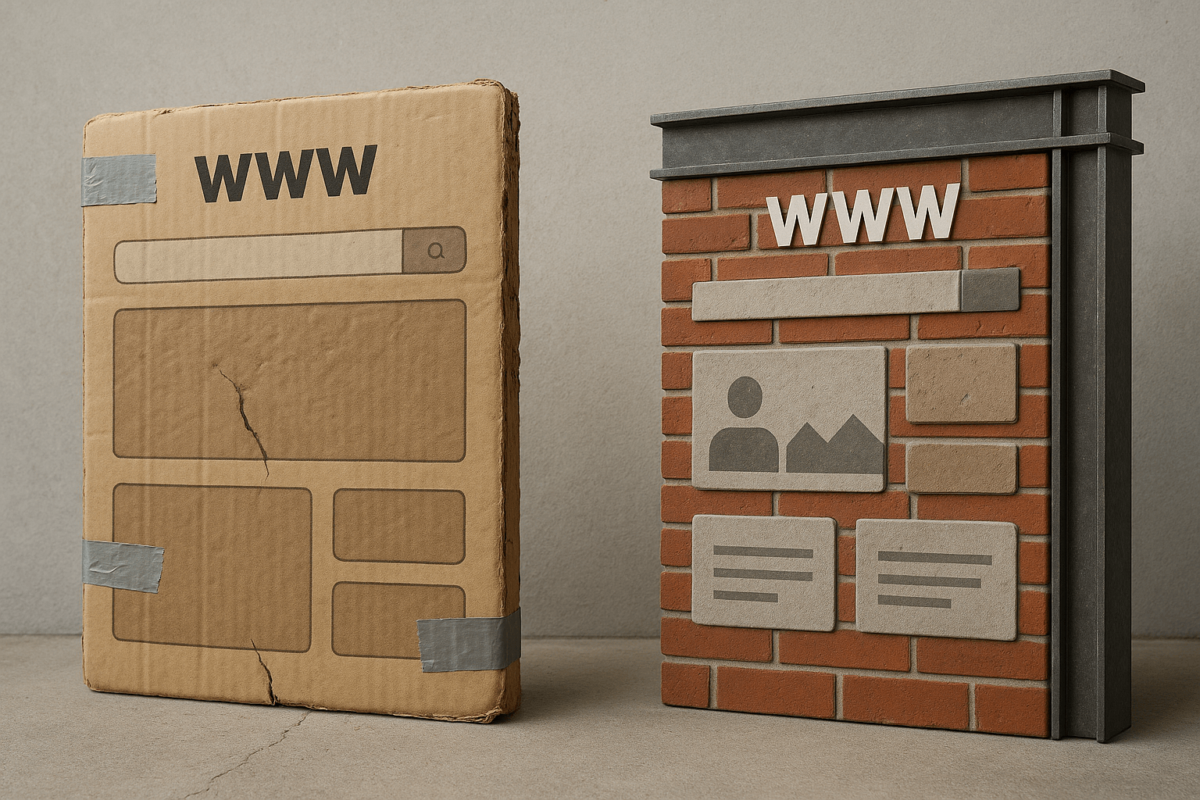The top tip for finding and hiring the best web designer is to review their portfolio and client testimonials to ensure their style and experience match your project needs. This helps you choose someone who can deliver exactly what you’re looking for.
Hiring a web designer is a critical step in establishing a successful online presence for your business. Whether you are looking to create a brand-new website or revamp an existing one, understanding how to hire a web designer effectively can make all the difference. In this article, we will explore essential tips for hiring, finding the right web designer, understanding pricing, keeping up with web design trends, and ensuring effective communication throughout the project.
This article is a part of the series of Ultimate Guide to Hiring a Web Designer for Your Small Business Website in 2025.

How to Hire a Web Designer Effectively?
What are the key factors to consider when hiring?
When you set out to hire a web designer, several key factors should be at the forefront of your decision-making process. First and foremost, consider the designer’s expertise in web design and their familiarity with the latest trends and technologies.
A professional web designer should possess a robust portfolio showcasing their previous work, which can provide insight into their design style and capabilities. Additionally, assess whether the designer has experience in your industry; this can significantly impact their understanding of your target audience and customer needs.
Another important factor is the designer’s approach to user experience (UX) and search engine optimization (SEO). A web designer for your business should prioritize creating a user-friendly interface that enhances customer engagement while also being optimized for search engines.
Furthermore, evaluate the designer’s communication skills, as effective communication is crucial for a successful collaboration. Lastly, consider the budget you have allocated for your web design project; ensure that the designer can work within your financial constraints while still delivering high-quality results.
How can I assess the expertise of web designers?
Assessing the expertise of potential web designers involves a thorough review of their portfolios and client testimonials. Look for a diverse range of projects that demonstrate their versatility and ability to adapt to different styles and requirements. A strong portfolio should include examples of websites that not only look appealing but also function effectively across various devices and platforms.
Additionally, consider conducting interviews or consultations with candidates to gauge their knowledge of current web design trends and technologies. Ask them about their design process, how they approach challenges, and their familiarity with tools such as HTML, CSS, and JavaScript.
Moreover, inquire about their experience with web development and whether they can collaborate with web developers if needed. This will help you identify a well-rounded designer who can handle all aspects of your web design project.
What questions should I ask potential candidates?
When interviewing potential web designers, it’s essential to ask targeted questions that reveal their capabilities and approach. Start by asking about their previous experience with similar projects and what challenges they faced. This will give you insight into their problem-solving skills. Additionally, inquire about their design process, including how they gather requirements and feedback from clients.
Furthermore, ask about their familiarity with SEO best practices, as this is vital for ensuring your website ranks well in search engine results. Questions about their preferred tools and technologies can also provide clarity on their technical skills. Lastly, discuss timelines and availability to ensure that the designer can meet your project deadlines without compromising quality.
From my personal experience, I want to say that asking certain questions is quite individual, as the needs and wants of other clients may differ from what you personally require. Therefore, it’s important to ask questions that are directly related to your specific goals and what you want your web designer to achieve. However, among the essential questions that apply to all web designers are their level of experience, the specific skills required to complete the task, the presence of professional portfolio and testimonials from past clients.
Where to Find a Web Designer for Your Project?
What platforms are best for finding freelance web designers?
Finding the right freelance web designer can be streamlined by utilizing various online platforms. Websites such as Upwork, Freelancer, and Fiverr are popular choices for connecting with freelance web designers. These platforms allow you to browse through profiles, review portfolios, and read client reviews, making it easier to find a designer who matches your requirements.
Additionally, LinkedIn is an excellent resource for finding professional web designers. You can search for candidates based on their skills, experience, and recommendations from other clients. Social media platforms, particularly design-focused communities on Instagram and Behance, can also showcase designers’ work and help you discover potential candidates for your project.
Personally, I prefer using the Fiverr website for a couple of reasons. First of all, you can track the work of each professional and have access to testimonials, which allows you to get to know the web designer better. Secondly, the platform offers a wide selection of reliable professionals, which means you’re sure to find a web designer who suits your needs. And finally, it provides a secure payment method.
How to gather a list of potential web designers?
Gathering a list of potential web designers involves a combination of online research and networking. Start by leveraging the platforms mentioned earlier to compile a list of candidates whose work resonates with your vision. Additionally, reach out to your professional network for referrals; personal recommendations can often lead to finding reliable designers who have a proven track record.
Consider attending local networking events or webinars focused on web design and development. Engaging with professionals in the industry can help you connect with talented designers and gain insights into their work. Once you have a list of potential web designers, evaluate them based on their portfolios, expertise, and alignment with your project goals.
What are the benefits of hiring a design agency versus a freelancer?
When deciding between hiring a design agency or a freelancer, it’s essential to weigh the benefits of each option. Design agencies typically offer a team of professionals with diverse skills, including web designers, developers, and marketing consultants. This collaborative approach can lead to a more comprehensive and cohesive web design project, ensuring that all aspects of your website are well-integrated.
On the other hand, hiring freelance web designers can be more cost-effective, especially for smaller projects. Freelancers often provide personalized attention and flexibility, allowing for a more tailored approach to your specific needs. However, it’s crucial to consider the scope of your project; if it requires extensive resources or specialized skills, a design agency may be the better choice.

What is the Average Pricing to Hire a Web Designer?
How does pricing vary between freelance web designers and agencies?
Pricing for web design services can vary significantly between freelance web designers and design agencies. Freelancers often have lower overhead costs, which allows them to offer competitive rates. Depending on their experience and expertise, freelance web designers may charge hourly rates ranging from $25 to $150 or more, or they may offer fixed pricing for specific projects.
In contrast, design agencies typically have higher pricing structures due to their comprehensive services and the collaborative nature of their teams. Agency rates can range from $75 to $250 per hour, or they may provide project-based quotes that reflect the complexity and scope of the work involved. When budgeting for your web design project, it’s essential to consider the long-term value and quality of the work, rather than simply opting for the lowest price.
What factors influence the cost of web design services?
Several factors influence the cost of web design services, including the complexity of the project, the designer’s experience, and the specific features you require for your website. A simple, one-page website will typically cost less than a multi-page site with advanced functionalities such as e-commerce capabilities or custom integrations.
Additionally, the level of customization you desire will impact pricing. A template-based design will generally be more affordable than a fully custom design tailored to your brand’s unique identity. Other factors include the designer’s location, as rates can vary based on regional market conditions, and the timeline for project completion; rush jobs may incur additional costs.
How can I set a budget for my web design project?
Setting a budget for your web design project requires careful consideration of your overall goals and the resources available. Start by determining the essential features and functionalities your website must have to meet your business objectives. This will help you prioritize your spending and avoid unnecessary expenses.
Next, research the average costs associated with the services you require, whether you choose to hire a freelancer or a design agency. Having a clear understanding of pricing will enable you to allocate funds effectively while ensuring you don’t compromise on quality. Lastly, consider setting aside a contingency budget for any unexpected expenses that may arise during the project, as this will help you manage costs without sacrificing your website’s quality.
What are the Latest Trends in Web Design?
How do current trends impact the design of my website?
Staying updated with the latest trends in web design is crucial for ensuring your website remains relevant and appealing to users. Trends such as minimalism, bold typography, and immersive multimedia experiences can significantly influence how visitors perceive and interact with your site. By incorporating current design trends, you can create a visually stunning website that captures user attention and encourages engagement.
Moreover, trends in responsive design and mobile optimization are essential, given the increasing number of users accessing websites via mobile devices. A web designer should be well-versed in these trends to ensure your website provides an optimal user experience across all platforms. Keeping your design fresh and in line with current trends can also enhance your brand’s credibility and help you stand out in a competitive digital landscape.
What are the must-have features for an ideal website?
An ideal website should include several must-have features that enhance user experience and drive conversions. Key features include a responsive design that adapts to various screen sizes, fast loading times, and clear navigation to help users find information quickly. Additionally, integrating SEO best practices from the outset is vital for improving your website’s visibility in search engine results.
Moreover, consider including engaging content elements, such as high-quality images and videos, to keep users interested. A blog section can also be beneficial for sharing valuable insights and updates, further establishing your authority in your industry. Lastly, ensure that your website has clear calls to action (CTAs) that guide users toward taking desired actions, whether that’s signing up for a newsletter or making a purchase.
How can I ensure my website stays relevant with design trends?
To ensure your website remains relevant with design trends, it’s important to adopt a proactive approach. Regularly review and update your website’s design and content to reflect evolving trends and user preferences. Engaging with design communities and following industry leaders on social media can provide insights into emerging trends and innovative practices.
Additionally, consider conducting user testing and gathering feedback from your audience to understand their needs and preferences better. This information can guide your design decisions and help you make necessary adjustments to keep your website fresh and engaging. By staying informed and adaptable, you can maintain a website that not only meets current standards but also exceeds user expectations.
How to Communicate Your Requirements to a Web Designer?
What is the best way to outline my goals for the website?
Outlining your goals for the website is a crucial step in the web design process. Start by clearly defining the purpose of your website and the specific outcomes you hope to achieve. Whether your goal is to increase sales, generate leads, or enhance brand awareness, having a clear vision will help guide the design process.
Consider creating a project brief that outlines your target audience, key features, and any design preferences you have in mind. This document can serve as a reference point for both you and the web designer, ensuring that everyone is aligned on the project’s objectives. Additionally, be open to discussing your ideas and collaborating with the designer, as their expertise can provide valuable insights that enhance your original goals.
What I personally suggest is that before discussing your website goals with a web designer, take your time to make a list of the key features and all the necessary points you want to include in your website. Once you’re done with the list, you’ll be ready to communicate your website needs to the designer. This will help you cover all essential points and avoid forgetting anything.
How can I ensure effective communication throughout the project?
Effective communication is paramount for a successful web design project. Establishing a clear line of communication from the outset can help prevent misunderstandings and ensure that the project stays on track. Schedule regular check-ins and updates to discuss progress, address any concerns, and provide feedback on design drafts.
Utilizing project management tools can also facilitate communication and collaboration between you and the designer. Platforms like Trello or Asana allow you to track tasks, share files, and maintain a clear overview of the project timeline. Encourage open dialogue and be receptive to the designer’s suggestions, as this collaborative approach can lead to a more successful outcome.
As for my personal advice, if you are communicating only through a messenger, make sure to choose a platform that allows you to keep messages and does not let others delete messages without your permission. This way, your chat partner won’t be able to clear the chat history. Therefore, you can feel secure about the conversations and all discussed points, as they will remain in the chat in case you need them.

What role does a marketing consultant play in the design process?
A marketing consultant can play a vital role in the web design process by aligning the website’s design with your overall marketing strategy. Their expertise in understanding customer behavior and market trends can provide valuable insights that inform design decisions. A marketing consultant can help ensure that your website effectively communicates your brand message and engages your target audience.
Additionally, they can assist in optimizing your website for SEO and developing content strategies that enhance user experience and drive traffic. By collaborating with a marketing consultant, you can create a website that not only looks great but also serves as a powerful tool for achieving your business goals.


